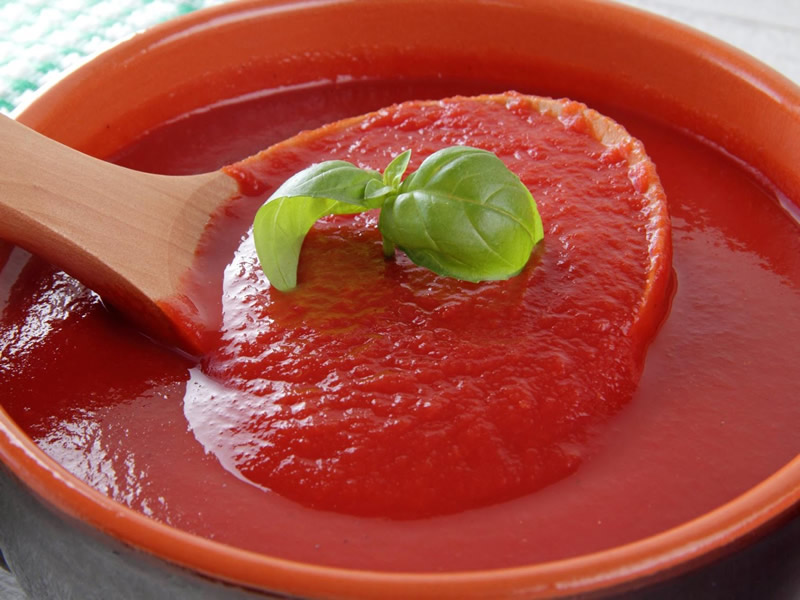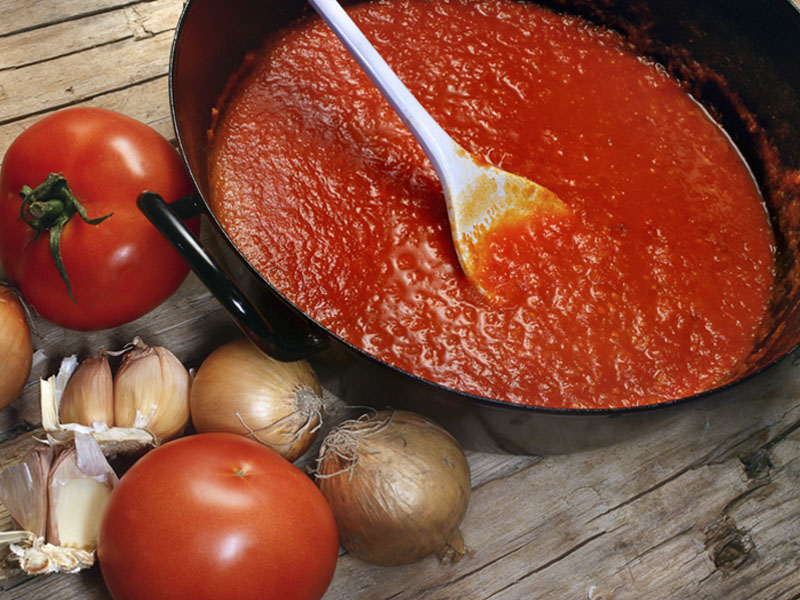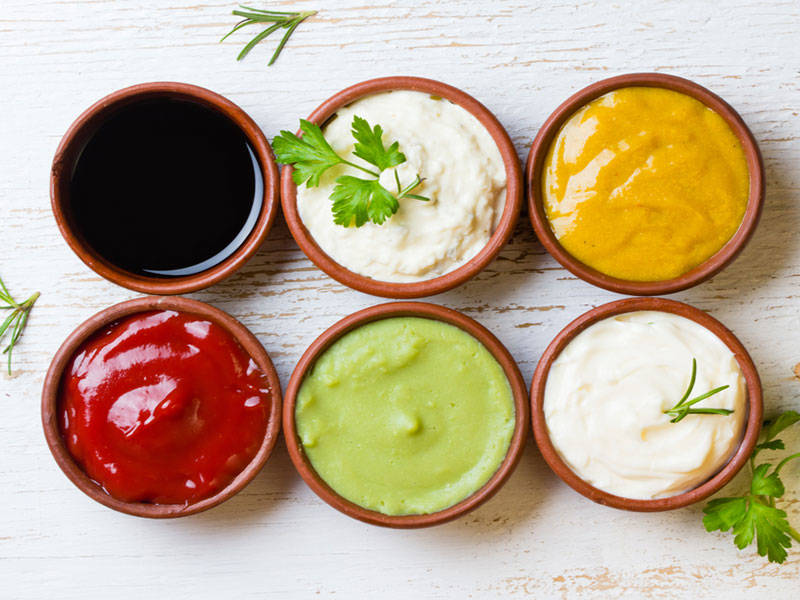Exploring Alternatives to Tomato Paste: Creative Ways to Enhance Your Recipes
Introduction:
Tomato paste is a versatile ingredient used in numerous recipes around the world, offering a rich and concentrated tomato flavor. However, there are times when having an alternative to tomato paste becomes necessary due to dietary restrictions, availability, or personal preference. In this article, we will explore various substitutes that can be used to replace tomato paste without compromising the flavor and texture of your dishes.
1. Tomato Sauce:
One of the most straightforward alternatives to tomato paste is tomato sauce. Tomato sauce has a thinner consistency compared to tomato paste, but it shares a similar taste. To use tomato sauce as a substitute, you will need to reduce it to thicken its consistency, which can be done by simmering it over low heat until it reaches the desired thickness.
2. Tomato Puree:
Another suitable alternative is tomato puree. Made from cooked and strained tomatoes, tomato puree provides a similar texture to tomato paste. However, tomato puree may be slightly more watery, so it is recommended to strain it using a fine-mesh sieve or cheesecloth to remove excess liquid before using it in your recipes. This will help achieve a thicker consistency similar to tomato paste.
3. Sun-Dried Tomatoes:
For a more robust flavor, sun-dried tomatoes can be used as a substitute for tomato paste. These concentrated tomatoes have a deep, intense taste that can add complexity to your dishes. To use sun-dried tomatoes as a replacement, rehydrate them in hot water or oil until softened, and then puree them to achieve a paste-like consistency.
4. Roasted Red Peppers:

Roasted red peppers can be an excellent alternative to tomato paste for those who are looking for a slightly different flavor profile. They offer a sweet and smoky taste that can enhance various dishes, particularly Mediterranean and Middle Eastern recipes. To create a paste-like consistency, puree roasted red peppers until smooth and use them as a substitute for tomato paste.
5. Red Bell Peppers:
If you’re seeking a milder alternative, red bell peppers can be used in place of tomato paste. They have a sweet and slightly tangy flavor that can contribute a pleasant taste to your dishes. Simply roast, peel, and puree red bell peppers to achieve a paste-like consistency.
6. Pumpkin Puree:
Surprisingly, pumpkin puree can be a viable substitute for tomato paste, particularly in certain recipes. Its mild and slightly sweet flavor can pair well with certain spices and herbs. To use pumpkin puree as an alternative, replace tomato paste with an equal amount of pumpkin puree, but be aware that the flavor will be different, so this substitution is best suited for dishes where a distinct tomato taste is not crucial.
7. Red Wine:
As an alternative that adds depth and complexity, red wine can be used instead of tomato paste. While it won’t provide the same texture, red wine can contribute a rich flavor to your dishes. To use red wine, reduce it over low heat until syrupy, then incorporate it into your recipe. Keep in mind that the alcohol content will evaporate during the reduction process, leaving behind the complementary flavor.
Conclusion:
Although tomato paste is a popular ingredient, it is not always readily available or suitable for everyone. By exploring various alternatives such as tomato sauce, tomato puree, sun-dried tomatoes, roasted red peppers, red bell peppers, pumpkin puree, and red wine, you can find substitutes that offer similar characteristics and flavors to elevate your culinary creations. Remember to adjust the quantity and consistency based on the specific alternative used, and feel free to experiment and adapt these alternatives to suit your own taste preferences and dietary needs.Exploring the Business Potential of Alternative Tomato Paste Substitutes
1. Market Demand and Trends:
The use of alternative tomato paste substitutes has been growing steadily in recent years. This trend is driven by various factors, including the rise of dietary restrictions, increasing consumer awareness of ingredients, and the need for culinary creativity. As a result, there is a growing market demand for products or services that cater to individuals seeking alternatives to tomato paste.

2. Development of New Product Lines:
Food companies and manufacturers can tap into this market demand by developing new product lines, such as ready-to-use tomato paste substitutes. These products can be marketed as convenient and versatile alternatives that provide the same flavor and functionality as tomato paste while catering to specific dietary needs or flavor preferences.
3. Private Label Options:
Retailers and grocery stores can also explore the possibility of offering private-label tomato paste substitutes. This approach enables them to provide customers with unique and exclusive products that differentiate them from competitors. By partnering with manufacturers or suppliers, retailers can develop their own branded alternatives, expanding their product range and attracting a broader customer base.
4. Online Retail and E-commerce:
In today’s digital age, online retail and e-commerce provide excellent opportunities for businesses to reach a wider audience. Companies can establish an online presence and sell tomato paste substitutes directly to consumers through their website or popular online marketplaces. This approach allows for easy accessibility, convenient purchasing options, and the ability to ship products globally.
5. Culinary Services & Meal Kits:
Another avenue to explore is offering culinary services or meal kits that incorporate alternative tomato paste substitutes. From meal delivery services to personalized cooking classes, businesses can cater to individuals who want to explore new flavors and cooking techniques. By providing recipes and ingredients that utilize tomato paste substitutes, businesses can assist consumers in discovering creative ways to enhance their dishes.
6. Specialty and Health Food Stores:
Specialty and health food stores are ideal locations to showcase and sell alternative tomato paste substitutes. These stores typically cater to a health-conscious and discerning customer base. By stocking a variety of tomato paste alternatives, these stores can attract customers who are specifically looking for healthier or unique alternatives to traditional tomato paste.
7. Farm-to-Table Restaurants:

Farm-to-table restaurants and establishments that prioritize using locally sourced and sustainable ingredients can take advantage of alternative tomato paste substitutes to enhance their menus. By replacing traditional tomato paste with unique alternatives, restaurants can offer guests innovative dishes that highlight the freshness and seasonality of the ingredients.
8. Cross-Promotion and Partnerships:
Collaborating with other businesses in the food industry can help increase visibility and create synergistic marketing opportunities. For example, alternative tomato paste substitute manufacturers can partner with spice companies, recipe bloggers, or cooking schools to promote their products. Such partnerships can feature recipe collaborations, sponsored cooking events, and cross-promotion on social media platforms to reach a wider audience.
9. Health Benefits and Nutritional Claims:
Emphasizing the health benefits and nutritional aspects of alternative tomato paste substitutes can attract health-conscious consumers. Tomato paste alternatives made from natural and organic ingredients can be marketed as a healthier option, containing no added preservatives or artificial flavors. Highlighting the nutritional content, such as high levels of antioxidants or vitamins, can further enhance the product’s appeal.
10. Product Differentiation and Innovation:
Continued research and development in the alternative tomato paste substitute market can lead to product differentiation and innovation. Companies can explore different flavor profiles, such as spicy or smoky variations, to cater to diverse palates. Packaging innovation, such as portion-controlled tubes or single-serving pouches, can also appeal to consumers looking for convenience and reduced waste.
11. International Market Potential:
The market potential for alternative tomato paste substitutes extends beyond national borders. Different cuisines and cultures have their own unique flavor profiles and cooking styles. Expanding into international markets can offer opportunities to adapt alternative tomato paste substitutes to specific regional preferences and culinary traditions.
12. Consumer Education and Recipe Development:
Promoting consumer education and recipe development can create a loyal customer base. Offering cooking tutorials, recipe inspiration, and tips on how to incorporate alternative tomato paste substitutes in various dishes can foster engagement and loyalty. Demonstrating the versatility and creativity they bring to recipes will encourage consumers to experiment and explore new flavor profiles.

Conclusion:
Exploring alternatives to tomato paste presents a range of business opportunities across various sectors of the food industry. From product development and retail to culinary services and international markets, businesses can tap into the growing demand for tomato paste substitutes. By catering to dietary restrictions, showcasing health benefits, and capitalizing on flavor innovation, companies can position themselves as leaders in this evolving market and provide consumers with unique and creative alternatives to traditional tomato paste.









